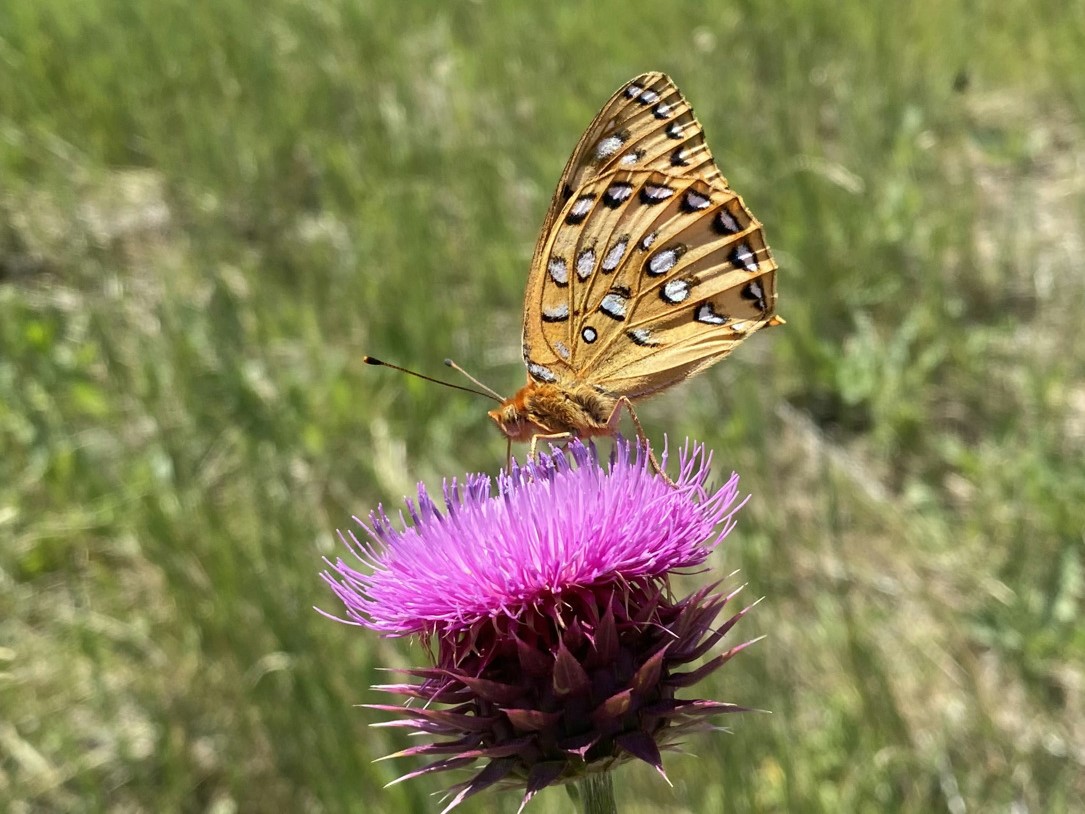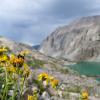Watching colorful butterflies and velvety moths visit flowers is one of the great joys of pollinator gardening. Keeping these welcome visitors coming back each year, many of whom are in decline, begins with supporting them as caterpillars!
It turns out that the number of plants that butterfly caterpillars feed on – known as “host plants” – is much more limited compared to the plants adults drink nectar from. In fact, most butterfly species feed on only one or a few different types of plants as they grow and develop. (Moth caterpillars are sometimes able to eat a wider range of plant species.) Some of these tightly woven relationships may already be familiar, like monarchs and milkweed, but knowing which plants to select for the other 450 butterfly species in western states, can seem overwhelming.
Below are five groups of plants that are habitat hotspots for multiple species of caterpillars in the western U.S. The exact species of plant that’s best for you will likely vary by geographic location, so look for specific suggestions in our regional guides for pollinator-friendly native plants or with local vendors in our Native Plant, Seed and Services Directory. Depending on your location, some of these plants may even be available through our regional Xerces Society habitat kit programs.
Nettles
Known for being “itchy”, nettles in the plant family Urticaceae are wonderful larval host plants for butterflies and moths, including Milbert’s tortoiseshell, a species that appears to be in decline in the Pacific Northwest, Midwest, and the Northeast. Nettles host additional butterflies like the question mark, eastern comma, satyr comma, and the red admiral. Moths are also avid feeders on nettles, including the spectacled nettle moth and the salt marsh moth.
Most nettles prefer a wetter habitat, so they should be watered well and kept in high nutrient soils. Common species include common nettle (Urtica dioica), slender stinging nettle (U. gracilis), and the stingless false nettle (Boehmeria cylindrica), which is most common in the eastern United States.
Mallows
Mallows are a large group of plants in the family Malvaceae that serve as a vital food source for many butterfly and moth species including the west coast lady, one of the most steeply declining butterflies in California and Nevada. Other caterpillars that feed on mallows include the gray hairstreak, common checkered skipper, northern white-skipper, and many rarer skippers in the Hesperiidae family in the desert Southwest. Moths supported by these sometimes “weedy” plants found in yards or sidewalk edges include Tarache major, a species of the aptly-named bird dropping moths, and Bagisara buxea. The flowers are also attractive to a number of native bees.
Mallows often have showy flowers of pink, purple, orange, or white. Some groups like the globemallows (Sphaeralcea sp.) are found in dry locations across the arid West including areas with very alkaline soils. Others are found only in wet soils, like streambank wild-hollyhock (Iliamna rivularis) or Oregon checkerbloom (Sidalcea oregana). Picking species that fit your local climate and soil type can help these plants survive for years and support many generations of Lepidoptera larvae.

Grasses
Native grasses host a wide range of butterfly and moth caterpillars, including skippers like the sandhill skipper, which is declining in California and Nevada. Other species that feed on grasses include the woodland skipper, common wood nymph, and the common ringlet. Numerous moth species feed on native grasses, but their ability to eat many different species of plants means they are sometimes also considered pests in turf grass.
Blue grama grass (Bouteloua gracilis) and Idaho fescue (Festuca idahoensis) are both widespread species in the western U.S. that play host to numerous golden hued, grass-feeding skippers. Most grasses rely on adequate water and sunlight for vigorous growth. Limiting trimming to later in the growing season can help grass-feeding caterpillars have time to complete their development.
Thistles
Native thistles are amazing plants from the sunflower family (Asteraceae) with showy flowers that can attract hummingbirds, bees, wasps, flies, and butterflies of all sizes. Thistles support a number of caterpillar species including the painted crescent, which is declining steeply in the desert Southwest. Other thistle feeders include the widespread mylitta crescent and the painted lady. Thistles are moth habitat as well, feeding species in the plume moth family (Pterophoridae), whose adults often have a distinctive T-shaped profile.
Thistles can be an admittedly difficult group to get to know, partly because there are several invasive species in the West and also because they have such a prickly reputation. Native species that you may see in arid regions include the cobwebby thistle (Cirsium occidentale), wavyleaf thistle (C. undulatum), and the Mojave thistle (C. mohavense), while the rose thistle (C. andersonii) is found in woodlands and forest openings of the local high mountain ranges of California, Nevada, and Oregon. Many of these species thrive in poor soils with little or no additional water when planted in their native ranges.

Willows
While wildflowers are easier to grow in small spaces, shrubs and trees can also provide abundant habitat and food for butterflies, moths and other insects. Willows in the genus Salix have dangling flowers called catkins that are attractive to a wide range of bees. The leaves are food for several western butterfly species including the mourning cloak, Lorquin’s admiral, Weidemeyer’s admiral, western tiger swallowtail, and the sylvan hairstreak, along with moths including the western tussock moth, polyphemus moth, and the Nevada buck moth.
Willows will enjoy almost as much water as they can be given. Species like arroyo willow (Salix lasiolepis), narrowleaf willow (S. exigua), and Scouler’s willow (S. scouleria) are widespread and adaptable to various western climates. Plant them in a larger space where they can spread and they will provide crucial early season nectar for bees, food for caterpillars, and habitat for birds all at the same time.
No matter the size, location or habitat type, you can provide crucial habitat for multiple species at once with the right plants in the right places. Good luck making your own habitat hotspot!





